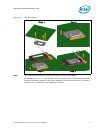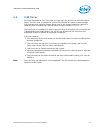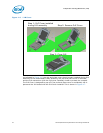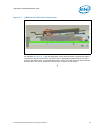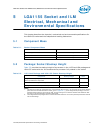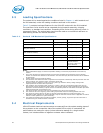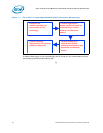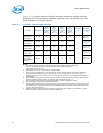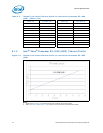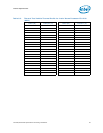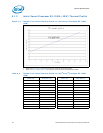
Thermal/Mechanical Specifications and Design Guidelines 39
LGA1155 Socket and ILM Electrical, Mechanical and Environmental Specifications
5.5 Environmental Requirements
Design, including materials, shall be consistent with the manufacture of units that meet
the following environmental reference points.
The reliability targets in this section are based on the expected field use environment
for these products. The test sequence for new sockets will be developed using the
knowledge-based reliability evaluation methodology, which is acceleration factor
dependent. A simplified process flow of this methodology can be seen in Figure 5-1.
Table 5-4. Electrical Requirements for LGA1155 Socket
Parameter Value Comment
Mated loop inductance, Loop <3.6 nH
The inductance calculated for two contacts,
considering one forward conductor and one
return conductor. These values must be satisfied
at the worst-case height of the socket.
Socket Average Contact Resistance
(EOL)
19 mOhm
The socket average contact resistance target is
calculated from the following equation:
sum (Ni X LLCRi) / sum (Ni)
• LLCRi is the chain resistance defined as the
resistance of each chain minus resistance of
shorting bars divided by number of lands in
the daisy chain.
• Ni is the number of contacts within a chain.
• I is the number of daisy chain, ranging from
1 to 119 (total number of daisy chains).
The specification listed is at room temperature
and has to be satisfied at all time.
Max Individual Contact Resistance
(EOL)
100 mOhm
The specification listed is at room temperature
and has to be satisfied at all time.
Socket Contact Resistance:
The resistance of
the socket contact, solderball, and interface
resistance to the interposer land; gaps included.
Bulk Resistance Increase ≤
3 mΩ
The bulk resistance increase per contact from
25°C to 100°C.
Dielectric Withstand Voltage 360 Volts RMS
Insulation Resistance 800 MΩ



